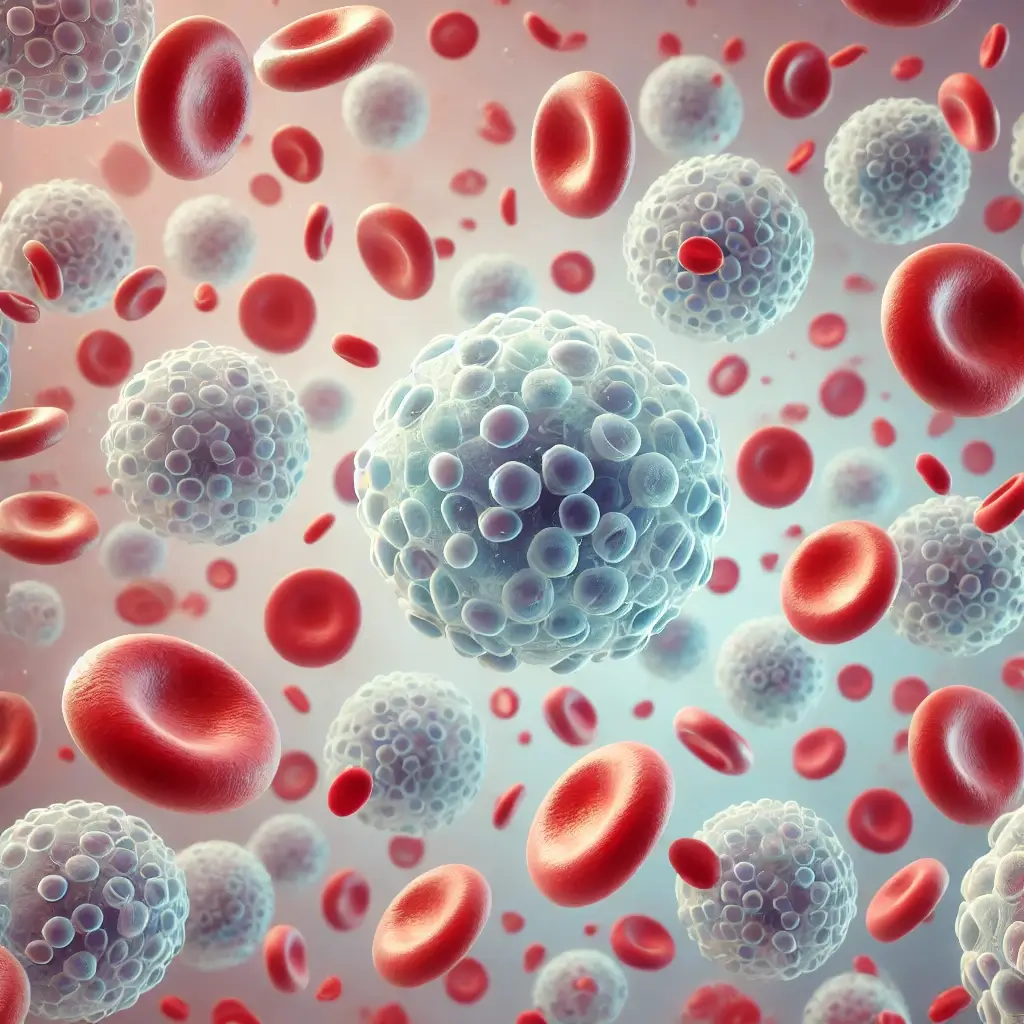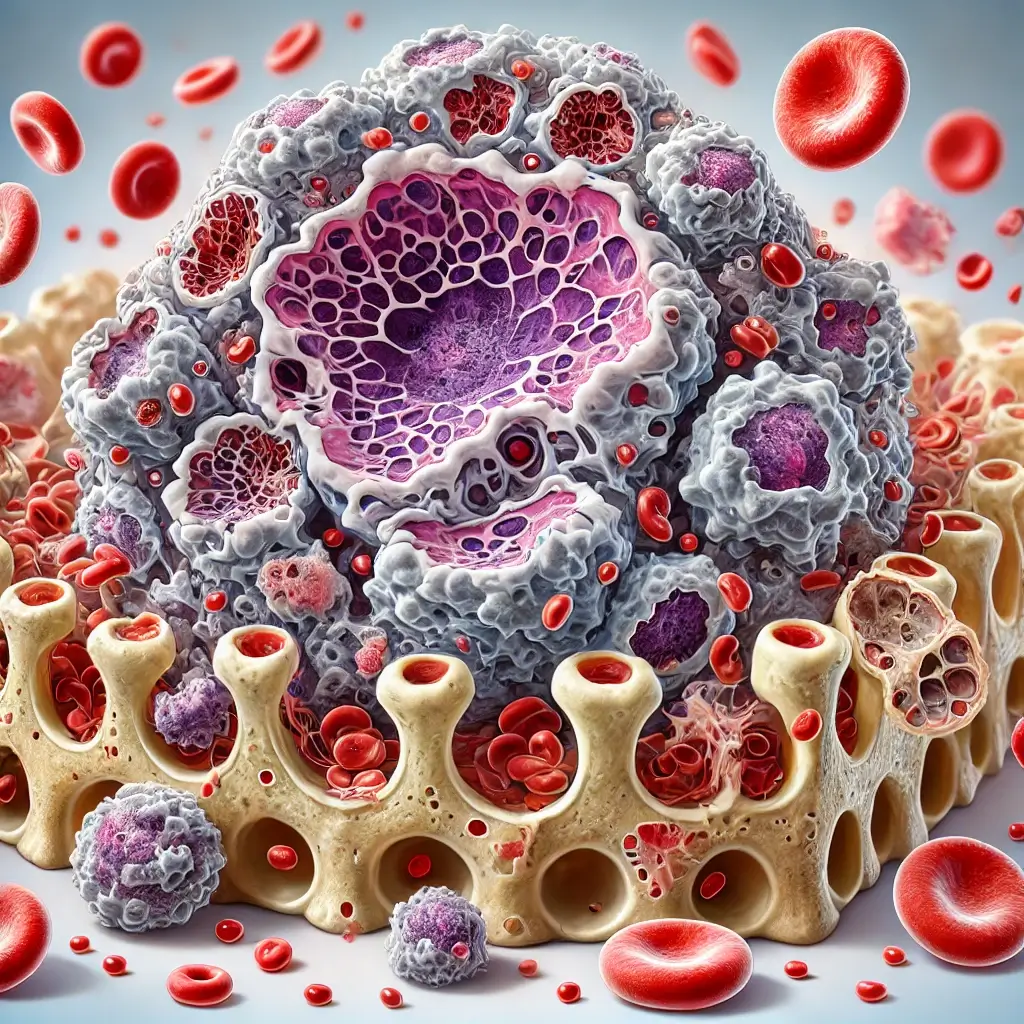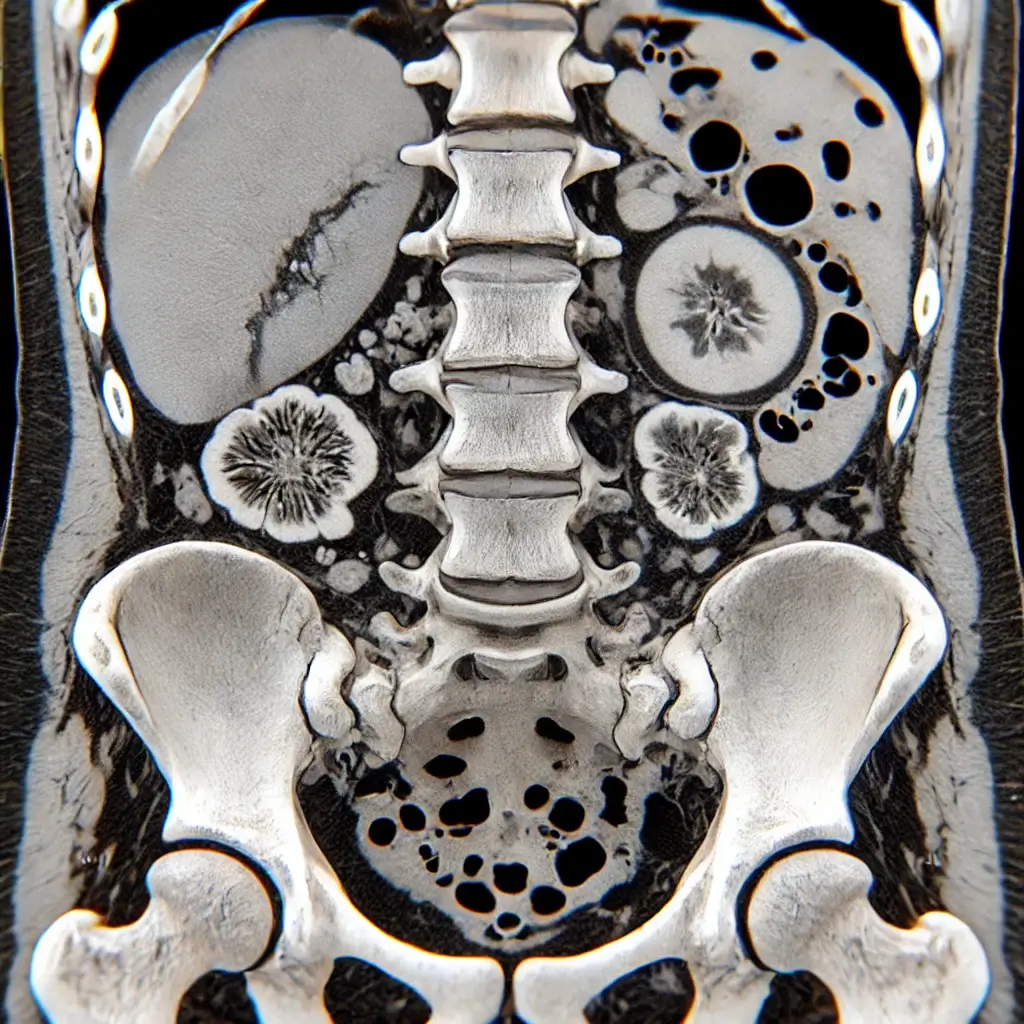Book Appointment Now
Understanding Multiple Myeloma

Multiple Myeloma Guide
Introduction
What Is Multiple Myeloma?
Multiple myeloma is a type of blood cancer that starts in the plasma cells, which are white blood cells found in the bone marrow. Plasma cells are responsible for producing antibodies that help the body fight infections. In Multiple Myeloma, these plasma cells grow uncontrollably and crowd out healthy cells, affecting the body’s ability to fight infections and maintain strong bones.
Why Is It Important to Learn About Multiple Myeloma?
Understanding multiple myeloma is crucial because:
- Early Detection Matters: Early diagnosis can help manage symptoms effectively and improve quality of life.
- Advances in Treatment: Recent developments, such as targeted therapies and immunotherapies, have improved outcomes for people with Multiple Myeloma.
- Rising Incidence: With an increasing number of cases worldwide, awareness is key to early detection and effective management.
Recent Developments
Recent advances in treatment include new medications, such as monoclonal antibodies, and advancements in stem cell transplants, which are helping patients achieve better outcomes and longer remissions.
Statistical Overview
- Incidence: Approximately 35,000 new cases of multiple myeloma are diagnosed each year in the United States.
- Mortality: Around 12,000 deaths annually are attributed to multiple myeloma in the U.S.
- Survival Rates:
- The 5-year survival rate is about 56%. This rate may vary based on age, overall health and the stage at diagnosis.
- Survival rates have improved significantly due to advances in treatment.
Trends and Disparities:
- Age Factors: Multiple Myeloma is more common in older adults, with the average age of diagnosis being around 69 years.
- Gender Differences: Men are slightly more likely than women to develop multiple myeloma.
- Ethnic Disparities: African Americans have a higher risk of developing multiple myeloma compared to other racial groups.
Medical Illustrations
Medical illustration of Multiple Myeloma, focusing on the bone marrow environment:

CT scan image showing the characteristic bone lesions of Multiple Myeloma:

Risk Factors and Prevention
a. Known Risk Factors
- Age: Most people diagnosed are over 65 years old.
- Gender: Men are at a slightly higher risk compared to women.
- Family History: Having a close relative with Multiple Myeloma can increase your risk.
- Obesity: Being overweight may increase the risk of developing Multiple Myeloma.
- Exposure to Chemicals: Exposure to certain chemicals, such as benzene, has been linked to a higher risk.
- Radiation Exposure: Exposure to high levels of radiation can increase risk.
b. Prevention
While there is no sure way to prevent multiple myeloma, you can reduce your risk by:
- Maintaining a Healthy Weight: Regular exercise and a balanced diet can help reduce the risk.
- Avoiding Harmful Chemicals: Limit exposure to toxic substances like benzene.
- Regular Medical Check-Ups: Especially if you have a family history of multiple myeloma, regular check-ups can help with early detection.
Screening
Screening Methods:
There is no standard screening test for Multiple Myeloma for people without symptoms.
Symptoms and Signs
Common Symptoms:
- Bone Pain: Often in the back or ribs, caused by the cancer affecting the bones.
- Fatigue: Due to anemia (a lack of red blood cells).
- Frequent Infections: The body’s immune system is weakened by the abnormal plasma cells.
- Weakness or Numbness: Particularly in the legs, due to spinal cord compression.
- High Calcium Levels: Can lead to symptoms like excessive thirst, frequent urination, constipation, and confusion.
When to Seek Medical Attention:
- These symptoms can also be caused by other conditions, so an evaluation by a healthcare provider is important for an accurate diagnosis..
- If you experience persistent bone pain, fatigue, or frequent infections, consult your healthcare provider.
Diagnosis
Diagnostic Process:
- Blood Tests:
- Complete Blood Count (CBC): Checks for anemia or low platelet count.
- Protein Electrophoresis: Measures abnormal proteins in the blood, which are often produced by myeloma cells.
- Urine Tests:
- Bence Jones Protein Test: Detects a specific protein linked to Multiple Myeloma.
- Bone Marrow Biopsy:
- Procedure: A sample of bone marrow is taken to check for Myeloma cells.
- Imaging Tests:
- X-rays, MRI, or CT Scans: Used to detect bone damage or tumors.
Benefits of Early Diagnosis:
Early detection can help start treatment sooner, prevent complications and improve quality of life.
Stages
Types of Treatment
Overview of Treatment Modalities
- Chemotherapy:
- How It Works: Uses drugs to kill rapidly growing cancer cells.
- Side Effects: Nausea, hair loss, increased risk of infection.
- Targeted Therapy:
- How It Works: Targets specific proteins on myeloma cells to stop their growth.
- Side Effects: Fatigue, diarrhea, risk of blood clots.
- Immunotherapy:
- How It Works: Helps the immune system recognize and attack cancer cells.
- Side Effects: Fatigue, skin reactions, flu-like symptoms.
- Stem Cell Transplant:
- How It Works: Replaces damaged bone marrow with healthy stem cells after high-dose chemotherapy.
- Side Effects: Risk of infections, fatigue, bleeding.
- Radiation Therapy:
- How It Works: Uses high-energy rays to target areas where cancer cells are causing bone pain or damage.
- Side Effects: Skin irritation, fatigue.
Comparing Treatments
| Treatment | Mechanism | Side Effects | Effectiveness | Study/Trial |
|---|---|---|---|---|
| Chemotherapy | Kills fast-growing cells | Hair loss, nausea | Effective in combination with other treatments | Smith et al., 2022 |
| Immunotherapy | Boosts immune response | Fatigue, skin rash | Improves survival in specific patients | Doe et al., 2023 |
| Stem Cell Transplant | Replaces damaged bone marrow | Fatigue, risk of infection | Can lead to long-term remission | Johnson et al., 2021 |
Living with Multiple Myeloma
Managing Physical Health:
- Nutrition: Eat a balanced diet rich in fruits, vegetables and lean proteins to support the immune system.
- Exercise: Engage in light activities like walking or yoga to maintain strength and reduce fatigue.
- Manage Side Effects: Speak to your healthcare provider about medications that can help manage nausea or pain.
Emotional Support:
- Counseling: Consider seeing a counselor or therapist to cope with anxiety or depression.
- Support Groups: Joining a support group can help connect you with others facing similar challenges.
Practical Tips:
- Stay Informed: Educate yourself about Multiple Myeloma and the available treatment options.
- Keep a Journal: Track your symptoms, treatment schedule and any questions for your doctor.
Additional Resources
These organizations offer valuable information, support networks, and updates on the latest research and treatments.
Key Takeaways
- Multiple Myeloma Is a Type of Blood Cancer: It affects plasma cells in the bone marrow.
- Risk Factors Include Age, Family History, and Obesity: Older adults are more likely to develop multiple myeloma.
- Symptoms Can Include Bone Pain, Fatigue, and Infections: Early detection is key to better outcomes.
- Various Effective Treatments Are Available: Options include chemotherapy, targeted therapy, immunotherapy, and stem cell transplants.
- Living with Myeloma Requires Physical and Emotional Care: Maintaining a healthy lifestyle and seeking support are essential.
- Remember: If you have concerns about Multiple Myeloma, talk to your healthcare provider for guidance and personalized advice.
Final Recommendations
- Stay Active in Your Care: Be proactive about your health, attend regular check-ups and communicate openly with your healthcare team.
- Adopt Healthy Habits: Eat well, stay hydrated and exercise regularly to support your body during treatment.
- Protect Your Immune System: Avoid contact with sick individuals, practice good hand hygiene and get recommended vaccines.
- Seek Support: Don’t hesitate to ask for help from family, friends, or support groups to manage the emotional and physical challenges.
Disclaimer
The information provided in this article is intended for general informational purposes only and should not be construed as medical advice. While every effort has been made to ensure the accuracy of the information presented, it is not a substitute for professional medical guidance, diagnosis, or treatment. Always consult a qualified healthcare provider with any questions you may have regarding a medical condition, including Multiple Myeloma. Do not disregard or delay seeking professional medical advice based on information found in this article. The authors and publishers are not responsible for any consequences resulting from the use of the information provided.
